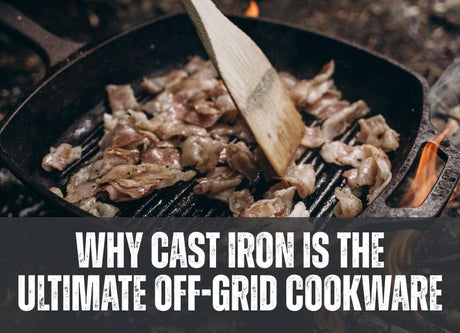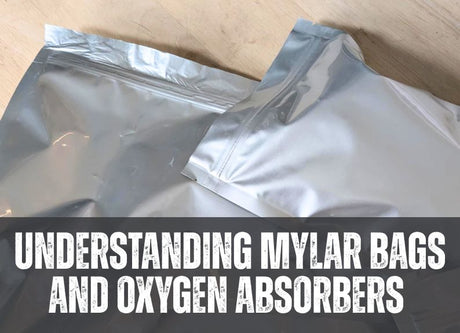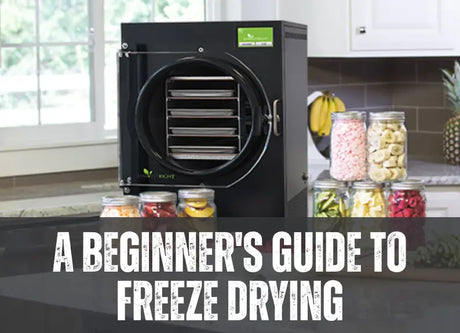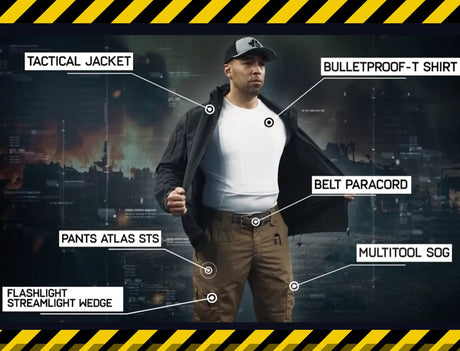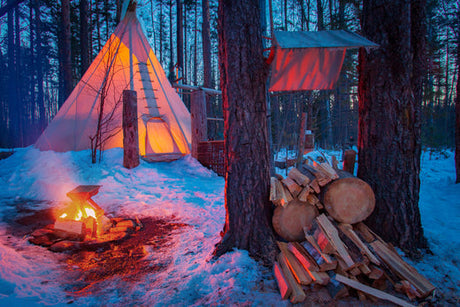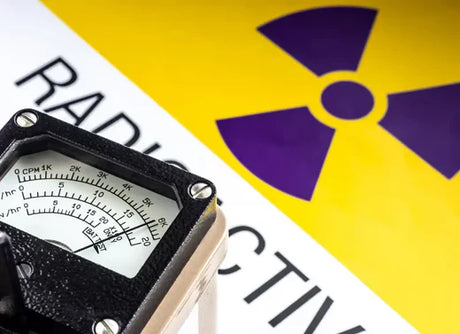Many of us are familiar with the doomsday clock. At 100 seconds to midnight, there is an ever-growing need to understand how to manage a potential nuclear fallout. While the looming threat of nuclear warfare has been a part of our social consciousness since the second world war, increasing tensions in Europe, Asia, and the Middle East make the threat feel its most present since the Cold War. In this blog, we want to give you a practical guide for navigating nuclear war––preparedness is always the best defence.
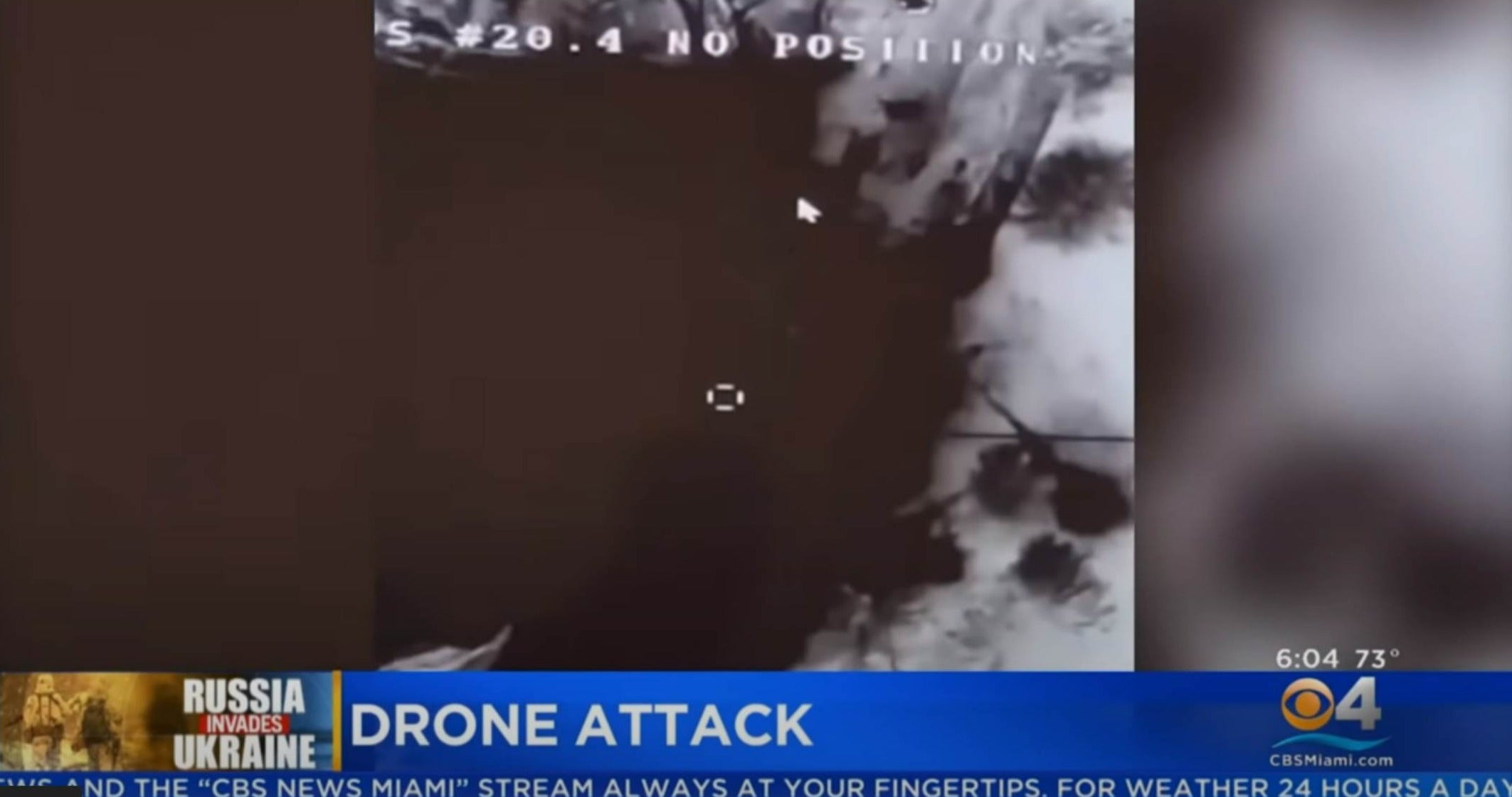
How to prepare for nuclear attacks.
In our latest Youtube video, Dr. Joe Alton gives us his practical advice for navigating radiation, care, and outcomes in the event of a nuclear disaster. The best way to prepare for nuclear fallout is to understand the risks and symptoms of radiation and how to minimize their impact.
-
Create an emergency plan with your loved ones
An emergency plan lets you know where to meet your friends and family once it is safe to do so. The immediate effects of radiation are such that it is always best to shelter in place, preferably in a shelter that is made from brick, concrete, or earth. Less effective shelters include motor homes, trailers, cars, and homes with drywall and wood.
-
Be prepared to shelter in place
Does your home have everything you need to effectively shelter in place? This is a critical part of planning for any emergency, but especially for a nuclear attack. The best outcome for a nuclear attack is to stay inside. Outside, there are several dangers, including nuclear fallout, unstable structures, and those who died in the blast. After the initial blast, you will have 15-30 minutes to get to the best possible shelter location before fallout behind falling.
Your shelter should have a minimum of 72 hours-2 weeks' supply of food and water for your family, a crank radio, generator or wood-burning stove, warm blankets and clothing, and tools to help you cook and survive.
-
Know the signs of radiation sickness
If you’re the medic for your group, it is crucial to understand and know how to treat or avoid radiation sickness in your crew. We are going to talk about the signs and symptoms below.
6 things you need in your emergency kit for a nuclear attack.
In the event of a nuclear attack, your shelter should contain these five items. Not only will you need local emergency information, but it will be critical that you have the capacity to stay in one location for at least two weeks.
These five items are essential for your survival:
-
Radiation Detector
A radiation detector is a device that can detect and measure levels of alpha, beta, and gamma particles and display them. You can learn more about radiation detectors here.
-
Crank radio
Nuclear blasts will render cell phones and other devices useless due to the high Electro-Magnetic Pulse it creates. A battery or crank-powered radio could be the only way for you to receive life-saving information in the wake of a blast.
-
Clean water
Having clean water is essential for your survival. Not only will you be able to use it to clean your body of fallout if you get caught outside, but you will need access to water while you shelter in place for two weeks while the debris and radiation clear. We recommend a ProOne water system for your home, as it provides the best filtering possible. Your water stores should be filtered before drinking, to protect you from any harmful bacteria. Learn more about water purification here.
-
Non-perishable food
Stockpiling food is something we discuss often, but that’s because it is an essential part of your emergency preparedness plan. You will need to sustain yourself and your group for up to two weeks while you shelter in place. MREs and freeze-dried foods will retain their flavour for 5-30 years making them perfect for stockpiling in your shelter. Learn how to preserve and stockpile your own food in our blog.
-
Camping gear
If you’re sheltering in place, warm clothing, hygiene products, blankets, mattresses, and cots as well as cooking supplies will be essential for keeping yourself safe.
-
Information & First Aid
Dr. Joe Alton’s book, The Survival Medicine Handbook, is an essential tool to have in your arsenal. It will help you understand and properly treat any medical situation in a variety of conditions.
First aid supplies are a critical part of your survival. If you don’t know where to start, a pre-made first aid kit can help you get started in your preparedness planning.
How is radiation measured?
There are several different terms used for describing the kinds of radiation and how they operate. These are particular units of measurement for every way that radiation can affect the environment and people. They are all key metrics for understanding risk and potential illness. It can be confusing to understand, so we’re going to break it down. 
-
Radioactivity
This is the amount of radiation released by materials. It is either measured through becquerels (international unit) or curies (U.S. unit).
-
Exposure
Radiation travelling in the air is measured through coulomb/kilogram (international) or roentgen (American). These units help to measure the ambient radiation level in a given location and can be used to gauge the environmental danger to you and your group.
-
Absorbed dose
The level of radiation absorbed by an object or person is typically measured in grays (international unit) or in rads (American unit).
-
Effective Dose
This unit measures the radiation absorbed by a person and adjusts to account for levels of radiation and their effect on specific organs. This is a particularly important measurement as we can understand the level of danger by understanding how much radiation is in the environment and how exposed a particular person was. This measurement is described in sieverts (international) or rems (U.S. unit).
3 ways to avoid radiation sickness in a nuclear attack
In a nuclear attack, the most dangerous period of time is the immediate days after the explosion. This is when the radiation is highest and exposure is most detrimental. Every medic should operate on the principle of as low as reasonably achievable––which means, avoiding exposure as much as possible. 
To avoid radiation poisoning in the event of a disaster or fallout setting, there are three big factors:
-
Time
Radiation will decrease in potency over time. Within the first 24 hours after a nuclear attack, it is not advisable to leave your shelter unless it is to seek significantly better shelter (i.e. moving from a vehicle to an enclosed concrete space). You have about 15-30 minutes after the blast to find better shelter before the fallout begins, this is the space you will spend the next two weeks, so it is crucial to know where you are going. An emergency plan is the best way to prepare you and your family for a nuclear attack.
Radioactive fallout is the vaporized dirt and material that forms the mushroom cloud we have come to associate with nuclear bombs. Fallout is radioactive material that is often undetectable but can sometimes be seen as black rain. Fallout radiation decays quickly, so within 2 weeks its radiation is around 1% of its initial level.
-
Distance
As much distance as possible from the initial blast is ideal. Your proximity can be a factor in developing Acute Radiation Syndrome (ARS) or experiencing other adverse effects such as cancer, burns, and death. Approx 35% of energy is in the form of thermal radiation. First-degree burns from an explosion can affect those up to 11 km away or more from the initial blast, third-degree burns occur within an 8km range. Flash blindness can occur within a full 25km range depending on the weather and geography. In addition, the fallout can travel 100s of miles (100m = 160km) so even if you are not close to the blast itself, understanding fallout is a key part of your health and survival.
The significant cause of damage is the force generated from the explosion, which disperses air rapidly generating up to 200 tonnes of force and 700+km/h winds. The farther away you are from the blast, the less these forces will impact you. Death from shrapnel and falling buildings is highly probable within at least a 10km range.
-
Shielding
In the event of a nuclear attack or disaster, having as much appropriate shielding as possible is can make a significant difference in your outcomes. Concrete is one of the most readily available materials for protection. In many cases, people may only have the option of their own basement, office, or school to protect them. The worst potential shelter is a car, drywall, or other lightweight building materials. Wearing white over black can also improve your chances, although this difference is relatively small when you’re in close proximity to a nuclear bomb.
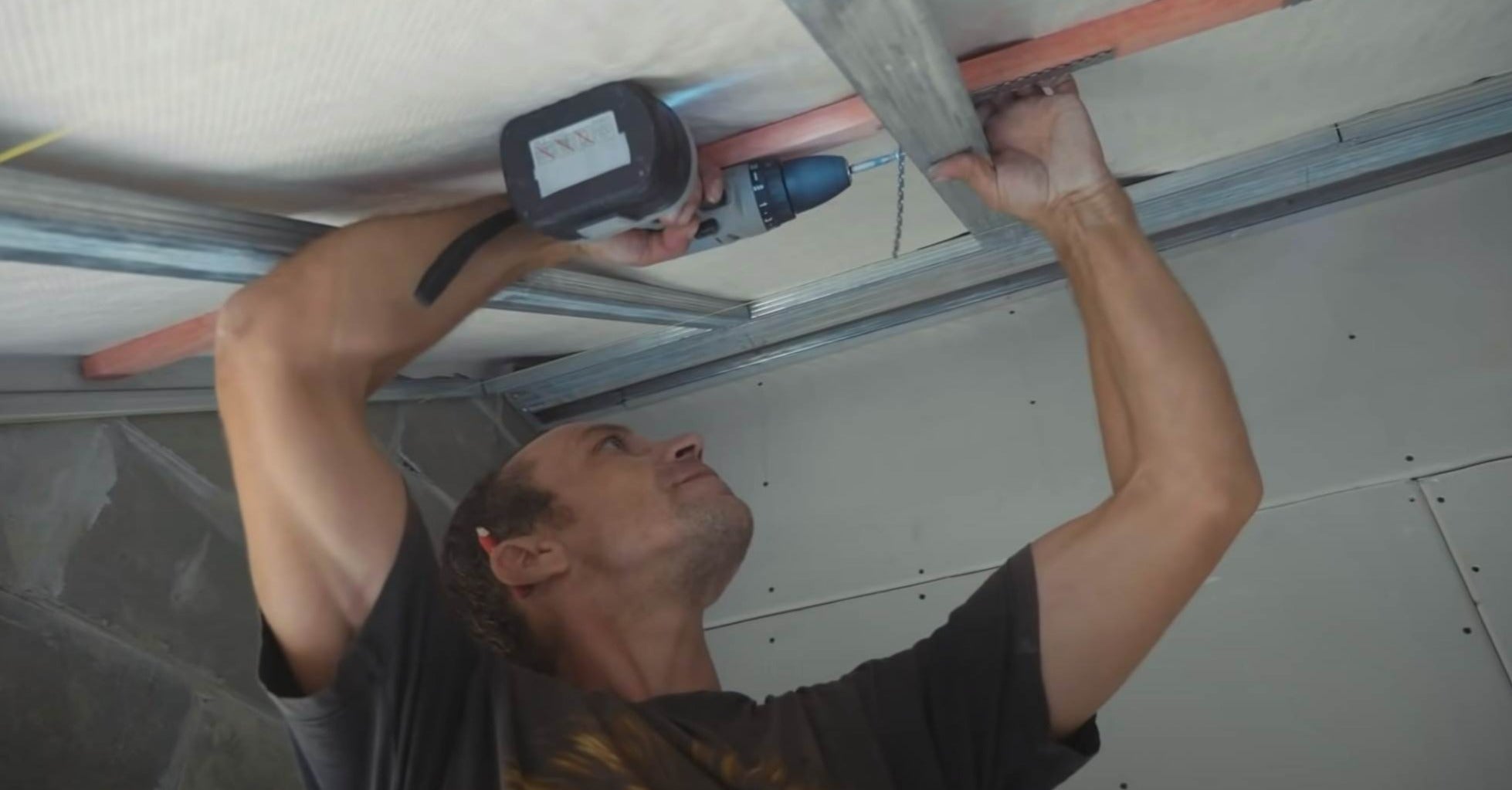
What are the 2 main medical effects of nuclear radiation?
-
Acute Radiation Syndrome
Your goal as a medic is to shelter your group so that they get as little exposure to radiation as possible. On average, a person will experience very small doses of radiation in their environment (~0.6 rd/0.006 gy per year). This is tolerable to the system and doesn’t cause any symptoms or need for concern. Any absorbed dose above 8gy/800rd and any effective dose above 6sv/600rem is 100% lethal for humans.
Acute radiation syndrome most often presents after extreme exposures such as those in Hiroshima or after the Chernobyl nuclear meltdown. At ~30rd/0.3gy you will start to experience symptoms. Symptoms of radiation exposure, from mild to severe, include:
- Nausea
- Headache
- Vomiting
- Susceptibility to infection/lack of healing
- Fatigue
- Dizzyness
- Diarrhea
- Dehydration
- Burns
- Immune system disruption
- Hair loss
- Lack of appetite
- Fever
-
Ulcers
At an absorbed radiation level of 300rd/3gy mortality rates begin to dramatically increase, more extreme ends of symptoms will be visible whether immediately or within weeks, months, or years of exposure. Many people within proximity of the bomb dropped on Hiroshima, didn’t experience as many immediate symptoms but years later developed cancers directly tied to radiation exposure. This is why the focus on safety is so reliant on minimizing exposure and minimizing the side effects of exposure as they present. 
-
Chronic radiation syndrome
This is less likely than ARS but it is still a serious concern for your group. Nuclear fallout (the radioactive earth and debris that falls back to the ground after a nuclear attack) can cause continuous exposure to radiation at mid-levels (70rd/0.7 and 105rd/1.5 Gy, at dose rates above 10rd/0.1 Gy per yr). Symptoms can occur after months or years of continuous long-term exposure at levels too low to qualify as ARS.
Symptoms of CRS include:
- Loss of touch or smell
- Cancer and leukemia
- Muscle and skin atrophy
- Cataracts
- Fibrous formations on skin
How do you treat Acute Radiation Syndrome (ARS) in a grid-down?
According to Dr. Joe Alton, the treatment goals for radiation sickness are to prevent further radioactive contamination, treat life-threatening injuries like burns and trauma, reduce symptoms, and manage pain.
4 steps for treating radiation sickness:
-
Decontamination
This is an essential step that will prevent the further inhalation of radioactive fallout and prevent the contamination of your shelter. Remove all outdoor clothing and gently rinse with soap and clean water. It is recommended that you have a radiation dosimeter to best understand the level of radiation present if you have to leave the shelter for any reason.
-
Treat burns and trauma
Having burn gels, bandages and dressings, clean water, and antibiotics all on hand is essential for treating radiation burns and trauma. Those closest to the blast are going to suffer the worst burns and trauma from flying debris. With thermal radiation, all those within 15km of a small nuclear bomb can expect to experience burns. It is essential for every prepper to have an understanding of how to treat these wounds.
-
Reduce symptoms and pain
Using any non-steroidal anti-inflammatory drugs (NSAIDs), you can treat pain, fever, and reduce inflammation. Other medication, such as antinauseants, will be needed to treat the other symptoms of radiation sickness, such as nausea, vomiting, diarrhea, and dehydration. Regardless of the level of radiation exposure, managing symptoms and preventing infection will be the medic’s top priority in treating radiation sickness.
-
Treat radiation absorption with potassium iodine

Iodine is essential for proper thyroid functioning, however, your thyroid will absorb radioactive iodine. To combat this, it is important to treat with potassium iodine as soon as you’re aware there is an exposure. Treat any children first, as they will be most susceptible to the long-term effects of radiation exposure. Dr. Joe Alton recommends 65 milligrams a day for up to 10 days for older children and 130 milligrams a day for up to 10 days for adults.
In a nuclear attack, being prepared is your best defence.
To recap, the best way to survive a nuclear attack is by securing good shelter, protecting yourself and others from the damaging effects of radiation, sheltering in place, and understanding the symptoms of radiation exposure. Being prepared is your best chance at survival following a nuclear attack.



